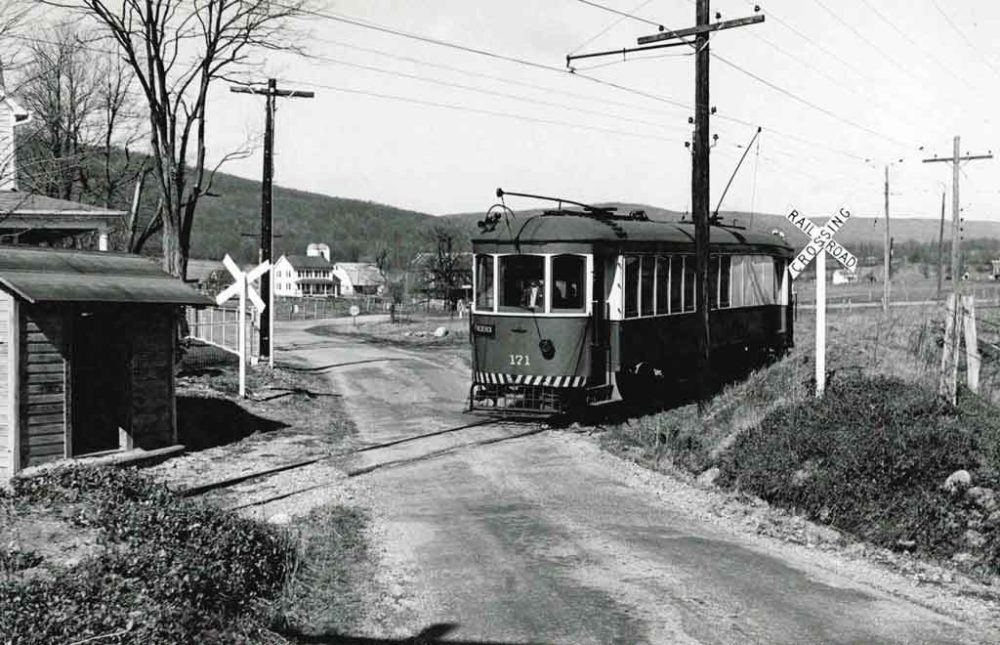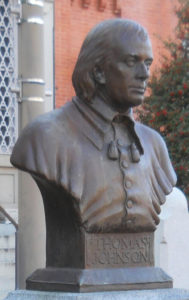Trolley Beheads Woman
by James Rada, Jr.
The Hagerstown and Frederick Railway trolley car ran north along the Thurmont line out of Frederick on the morning of October 16, 1917. The car left Frederick City heading to Montevue and Yellow Springs and onto a crossing at Charlesville. When it reached Thurmont, it would head back on its U-shaped route to Shady Grove on the MD/PA line.
“When the car was hardly half its length away, Mrs. Wastler sprang from the bushes by flinging herself straight out from her position, and placing her head on the rail,” the Catoctin Clarion reported.
Motorman Luther Horine braked the passenger car, but he wasn’t quick enough. He wasn’t supposed to be.
The trolley ran over the woman.
Once it finally rolled to a stop, Horine and Conductor Albert Kefauver jumped to the ground to try and help the woman. It was quickly obvious that she was dead. The trolley had beheaded her. “The upper part of the skull, minus the hair, was found a short distance from the body. A large portion of the brains was found at another spot,” the Clarion reported.
Someone notified Sheriff William C. Roderick and the coroner.
Traffic on the Thurmont Line stopped as the sheriff sought answers. He soon identified the woman as sixty-three-year-old Sarah Wastler from Yellow Springs. She had waited alongside the track for the trolley to arrive to commit suicide.
The authorities notified her husband, David E. Wastler of Yellow Springs. David said his wife had a mental illness. Not only had she tried to commit suicide previously, she had also threatened to kill him and some of their eight children.
David had sworn out a warrant against his wife a few years earlier, saying Sarah was abusive and a public nuisance. He told the judge “she had threatened to kill the members of her family if not allowed to spend the money of her husband in riding upon the cars and enjoying herself in Frederick,” according to the Frederick Post.
David said his wife had abused the customers in his shoemaking shop and scared them away. “He said conditions had become so bad in the last year and that ofttimes he would sleep in his shop rather than go home and be tormented by his wife,” according to the Frederick Post.
Because of her “insane” actions, he could not hire someone to watch her while he was at work.
David told one story of how he had purchased lard to be used for cooking. However, Sarah took half of it just to waste and use for something other than cooking, so he locked up the other half because it was needed for cooking. Sarah took an axe and broke into the locked room just to take the rest of the lard and also waste it. Another time, she wasted their firewood, meant to get them through the winter, by building a large bonfire.
Then David said Sarah threatened to kill their son, Lee, and went after him with a knife. Lee was able to get the knife away from her, though, so he hadn’t been injured. Lee told the judge that “his mother had thrown knives and forks at him and that she was continually saying she was going to have him sent to the House of Correction.”
Justice Anders corroborated this and added that Lee was a good kid who did not belong there.
Other witnesses testified that Sarah would scream so loudly that it could be heard a quarter mile away, and she was always trying to have warrants served on different people.
Sarah is buried in the Faith United Church of Christ Cemetery in Charlesville. Even after death, she left one last headache for her husband. Sarah apparently ran up a large number of bills, buying things she didn’t need. David only found out about this after her death because he ran notices in the Frederick Post that he wouldn’t be held responsible for bills Sarah incurred unbeknownst to him.

The Hagerstown and Frederick Trolley traveling through the countryside on its way to Thurmont.


